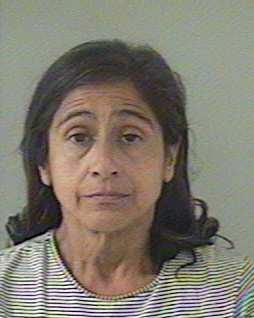True crime is a genre of story that has taken the world by storm, from video documentaries and television shows to extensive news coverage and podcast series. People cannot get enough of hearing the twisted things that can emerge from the darkest corners of humanity.
Although some debate the ethics of true crime storytelling, its popularity is undeniable. The suspense of being an omniscient observer after the fact adds tension to these stories and makes the resolution all the more rewarding.
While everyone loves a good mystery, the most popular stories are those where the criminal faces the consequences of their actions, especially when a victim gets to walk away from a life-threatening situation. Few of these stories are as harrowing and inspiring as that of Jaycee Dugard.
Abducted at the age of 11, Dugard endured 18 years of captivity before regaining her freedom.

The Abduction
On June 10, 1991, Jaycee Lee Dugard was walking to her school bus stop in South Lake Tahoe, California. It was then that Philip Garrido and his wife, Nancy, abducted her in broad daylight from her home.
Her stepfather, who was in the garage at the time, noticed the girl getting grabbed too late. He attempted to chase the car down on his bicycle as the abductors ran away.
When the car quickly outdrove him, he called the police and an FBI search ensued. Forces on the ground and in the air attempted to locate the missing girl, but had no luck.
Little did the search forces know that she was 170 miles away in the town of Antioch, California, being raised by those who captured her.
Philip Garrido had a history of sexual assault that he established throughout the 1970s, kidnapping and raping several women. He was also being charged with kidnapping and sexual assault.
He served over a decade in prison. This is where he met his wife Nancy Bocanegra as she visited her uncle in prison. They were married in the prison in 1981, and Garrido was released on parole in 1988.
It would take only three years for him to return to his sick and twisted ways when he and Nancy captured Dugard outside her home.

Hidden in Plain Sight
Jaycee Dugard’s captivity was a twisted tale of being hidden in plain sight. The Garridos kept Jaycee in a makeshift compound in their backyard from the moment they returned to Antioch.
Hidden from the outside world by this shed, Jaycee lived a life of unimaginable confinement. For over half a year, the only human interaction Dugard was exposed to was Philip, who would sexually assault her daily.
As a methamphetamine addict, Garrido would go on drug-induced rants about how he was chosen by God and that Dugard was chosen by God to assist him with his struggles with sex, since society refused to help him. His treatment of Dugard would oscillate wildly between a seemingly genuine care for her wellbeing and a cruel anger that threatened her existence.
Eventually, Garrido introduced Dugard to Nancy. She first approached Dugard as a kind and apologetic mother figure.
Later in life though, Dugard would describe Nancy as just as manipulative and cruel as Garrido. This was reinforced by the fact that Nancy continued to hold Dugard captive even after Garrido was returned to prison when he failed a drug test.

Life in Captivity
During her 18 years of captivity, Jaycee was subject to immense physical and psychological trauma induced by Garrido.
She was completely isolated for the majority of the time. She would only have encounters with a handful of people besides the Garridos before her rescue in 2009. She was also impregnated twice by Garrido and forced to give birth at 14 and 17.
The girls believed that Dugard was their sister and that Nancy and Philip were their parents until their eventual rescue. There were also half a dozen moments where police, neighbors, or even strangers reported odd behavior from the Garrido’s residence.
Each time resulted in a surface-level investigation where all suspicion was brushed off. Whether Dugard was aware of these close calls or not, they add to the depth of her tragedy.
Discovery and Freedom
The turning point in Dugard’s ordeal came in 2009. Garrido, accompanied by his two “daughters”, attempted to distribute religious literature at the University of California, Berkeley.
His erratic behavior attracted the attention of campus police, who looked into Garrido’s background and found that he was violating his parole. The ensuing investigation brought Dugard into the station.
Now 29 years old, she first attempted to obfuscate her identity while confirming the children were her own. It was not until Garrido admitted to kidnapping and raping Dugard that she admitted her own identity.
The news swept the nation, stunning everyone who had followed the story for nearly two decades. Dugard was able to return to her life with her two daughters, and those who kidnapped her finally received their punishment.
Philip Garrido was convicted and sentenced to 431 years in prison with no chance of parole. His wife, Nancy Garrido, received a sentence of 36 years to life.
Rebuilding a Life
Although reuniting with her family and returning to a normal life was amazing, it introduced new challenges to Dugard’s life. The process of recovering from the trauma required a lot of mental, physical, and emotional effort and the support of her loved ones.
Jaycee exhibited remarkable strength during this period. She used her experience to raise awareness about abduction and the trauma survivors face.
She co-authored a memoir, “A Stolen Life,” where she shared her journey of captivity, survival, and recovery. In doing so, she became an advocate for survivors of trauma and a voice against the horrors of abduction.
References
ABC News. “Jaycee Dugard, Her Daughters Today, and if They Ever Want to See Their Father.” ABC News, July 8, 2016. https://abcnews.go.com/US/jaycee-dugard-daughters-today-father/story?id=40279504.
“Jaycee Dugard.” Crime Museum, 2022. https://www.crimemuseum.org/crime-library/kidnappings/jaycee-dugard/.

